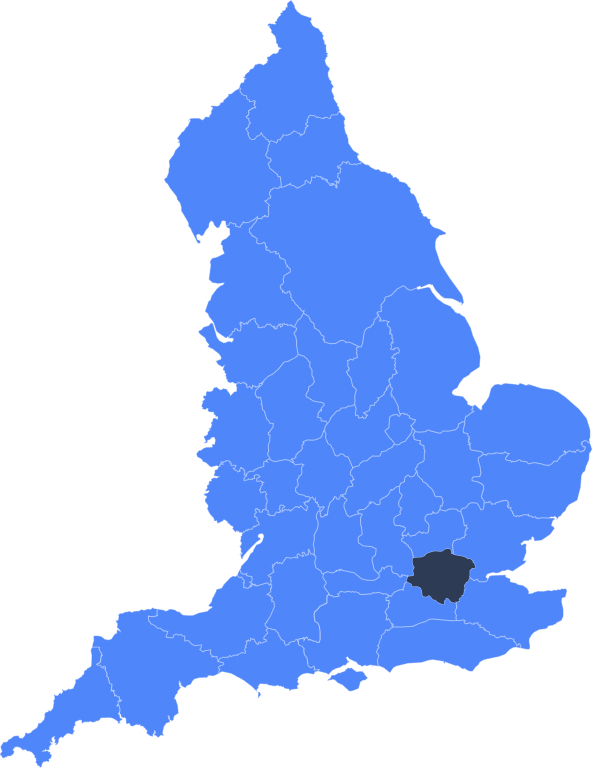



In transitioning to a more centralised digital healthcare offering, England's health and care has been split into 42 different ICS organisations.
Understanding ICS structures, their partners, and their decision-makers is how the most successful suppliers create relationships and new opportunities earlier (before public tender).
The map below outlines the regional split across the country.

Region-specific ICS knowledge can help you inform a more focused approach to working with the public sector and create more opportunities faster.
The London ICS region is comprised of 5 ICS key boundaries which cover a total of 8.9 million residents and 33 local authorities.

CCGs: North West London CCG
Number of NHS Trusts: 8
Councils: Brent, Ealing, Hammersmith and Fulham,Harrow, Hillingdon, Hounslow, Kensington and Chelsea,Westminster
CCGs: North Central London CCG
Number of NHS Trusts: 12
Councils: Barnet, Camden, Enfield, Harringay, Islington
CCGs: North East London CCG
Number of NHS Trusts: 5
Councils: Barking & Dagenham, City of LondonCorporation, Hackney, Havering, Newham, Redbrige, Tower Hamlets
CCGs: South West London CCG
Number of NHS Trusts: 10
Councils: Croydon, Kingston, Merton, Richmond,Sutton, Wandsworth
CCGs: South East London CCG
Number of NHS Trusts: 7
Councils: Bexley, Bromley, Greenwich, Lambeth,Lewisham, Southwark
See the graphic below to understand the Greater London is split by ICS region.
As part of the governments Targeted Investment Fund (TIF), an additional £700 million has been allocated to assist the NHS. To gain a deeper understanding of the TIF, read this blogpost.
The allocations for the £700 million include £330 million for upgrading NHS facilities, £250 million for new technology and £120 million for any supporting revenue costs.
London has received £109 million of this allocation. As ICSs are not yet statuary bodies, the exact amount allocated to each organisation is unknown. However, as part of the TIF, there has been some approved funding.

The graphic below is a table of approved TIF fund bids by provider across a sample size selection of organisations within London ICS region.

From April 2022, healthcare funding will rise by a record £36 billion over the next 3 years. The additional funding is on top of the government’s previous historic long-term settlement for the NHS, which will see NHS funding increase by £33.9 billion to a total of £148.5 billion by 2023 to 2024.
Once ICSs take legal shape in July 2022, we’ll learn more about how each of the 42 organisations will allocate funding.
Despite the current ambiguity, one thing is clear: the ICS transition will result in a tremendous amount of funding toward digitising the NHS, creating an enormous number of opportunities for technology suppliers to work with the public sector. For more general information on the NHS's future plans, read this overview blogpost.
To learn more about the ICS transition, download our in-depth report; Digitising a changing NHS: The opportunities emerging for tech suppliers through the ICS transition, or sign up to Stotles today.